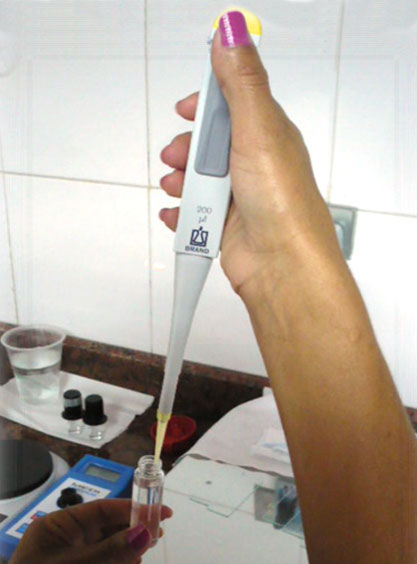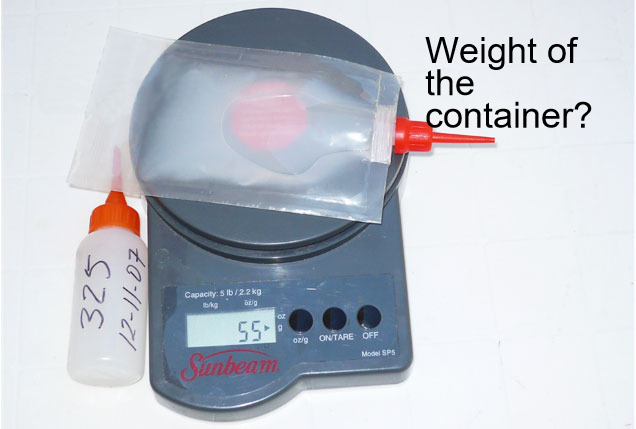It is a 900-sow farrow-to-finish farm located in Venezuela, with artificial insemination (cervical method) and with 45-50 sows weekly batches. The weekly farrowing rate fluctuates between 85% and 92%, with a health control that includes a biosecurity program and vaccination against CSF, Mycoplasma, colibacillosis, Aujeszky's disease, parvovirus, circovirus and foot-and-mouth disease. The herd is PRRS-positive (without vaccination), and the feed comes from a company with a quality control system in all of its processes. The farm is located in a region with an average annual temperature of 26ºC. Weanings are carried out on Thursdays, and heat detection is performed twice a day every day. On the weaning day no feed is provided to the sows. Lactation lasts an average of 25 days, and the weaned piglets weigh 6.5-7 kg. The staff has been working on the farm for more than 5 years, and the rotation is low. Some weeks before the start of the case, a supervisor for site 1 was hired in order to control the AIs, introducing changes in the sows' management:
- Increase in the weaned sows' daily ration (lactation feed) by 500 g, reaching 3.5 kg.
- Change of the AI doses packaging from bottle to bag.
Start of the problem

During weeks 1, 2 and 3, the returns to oestrus were as expected. Nevertheless, in week 4, 44.9% of the sows inseminated 3 weeks before returned to oestrus (Table 1). Faced with this situation, the supervisor modified the AI schedule, bringing it 1 hour earlier (from 08:00 to 07:00). Being used to the good results and without suspecting of any specific cause, the supervisor was overconfident, an no more measures were implemented. On week 5, a 47.8% of returns to oestrus among the 46 sows inseminated on week 2 was reported. The supervisor, not having a clear evidence of the problem, asked for specialised help. On week 6, a 50.0% of returns to oestrus among the 51 sows inseminated on week 3 was reported.
Table 1. Percentages of returns to oestrus per week of insemination.
| Weeks | 1 | 2 | 3 | 4 | 5 | 6 |
| Inseminated sows (3 weeks before) | 50 | 45 | 45 | 49 | 46 | 51 |
| Sows that return to oestrus | 5 | 5 | 4 | 22 | 22 | 26 |
| % of returns to oestrus | 10 | 11.1 | 8.9 | 44.9 | 47.8 | 50.9 |
The farm veterinarian, suspecting of a possible PRRS outbreak, recommended a serological screening. Nevertheless, no more symptoms, such as piglet mortality, abortions, discharges, etc. were seen. Likewise, he recommended the testing of the feed to rule out mycotoxins.
After three weeks with a great increase in returns to oestrus, and faced with the absence of other symptoms of disease, the reproduction specialist redirected the investigation of the case towards the study of the reproductive records.
Analysis of the case
When studying the returns to oestrus, it was seen that 89% of them were regular (±21 days), so the study was directed towards the moment of insemination. The inspection of the records showed us that the returns to oestrus were independent of the parity and the boar used. In this sense, the following aspects were taken into account:
- The sow. The post-weaning oestrus appeared, in more than 90% of the sows, between days 4 and 6. Body condition around 3, with good feeding and without vulvar discharges. The gilts had a good size and weight.
- The boar. Good physical appearance, without apparent injuries, good appetite and libido. Excellent sperm quality.
- The inseminator. The inseminator has always worked on the farm, he has many years of experience and is very responsible.
- Processing of the semen. According to the implemented protocol. The doses were seemingly thinner than usual.
- Quality of the doses. A good motility and vitality of the sperm in seen under the microscope.
Until then all was correct, in accordance with the protocols, with the exception of what regarded to the processing of the doses, so we focused more on this point.
We went deeper into the study at the laboratory level, bearing in mind:
- The extender used. Long-term extender, recently bought, good dilution, transparent, without turbidity and a good preservation.
- Water quality. The analysis showed a conductivity of 4.16 microsiemens/cm and a pH of 6.9 (Photo 1), these values are within the recommended levels.
- Stored doses. Without important variations in temperature when verifying the values of the internal refrigerator thermometer.
- Semen collection. No changes, in accordance with the protocol carried out by the technician that has been working on the farm for years. Initial cleaning and gathering of the second fraction only.
- Semen evaluation. According to the protocol and the records only the semen with the best motility and vitality is processed.
- Calculation of the doses. According to the value given by the photocolorimeter (Photo 1) and the reference table (Table 2).

Photo 1. Sample for determination of the concentration.
Table 2. Calculation for the number of doses. For 3 billion sperm doses.
| Reading | Ejaculate volume | |||||||
| 160 | 170 | 180 | 190 | 200 | 210 | 220 | 230 | |
| 0.18 | 11 | 11 | 12 | 13 | 13 | 14 | 15 | 15 |
| 0.21 | 13 | 13 | 14 | 15 | 16 | 16 | 17 | 18 |
| 0.24 | 14 | 15 | 16 | 17 | 18 | 19 | 20 | 21 |
| 0.27 | 16 | 17 | 18 | 19 | 20 | 21 | 22 | 23 |
| 0.30 | 18 | 19 | 20 | 21 | 22 | 24 | 25 | 26 |
| 0.33 | 20 | 21 | 22 | 23 | 25 | 26 | 27 | 28 |
- Dilution. According to the number of doses and the ejaculate volume.
- Packaging. It was seen that the double of the calculated doses had been packaged. This had been going on for several weeks, since the change of packaging for the doses, and it was not shown in the laboratory report.
The rest of the assessed points were correct, except the packaging. It was seen that they had introduced a new packaging without the previous information about its applicability, and this caused the preparation of a number of doses that was much higher than that established according to the calculations.
Diagnosis
As the capacity of the new bags was unknown, they introduced a tentative volume instead of the volume required according to the established concentration, so more doses than the calculated ones were produced.
What happened?
The company was initially using 110-ml containers, so the total volume required for 20 doses of 3x109 sperm was 2,200 ml. When the container was changed, the new volume was not borne in mind. When weighing a dose, it was seen that the total weight was 50-55 g, so with a volume of 2,200 ml more than 40 doses were obtained and the number of sperm per dose was lower than 1.5x x109 (Photo 2).

Photo 2. Weight of the problem dose
Treatment and control
The calculation considering the new 80-ml container was corrected, so for 20 doses the total volume needed was 1,600 ml. The filling volume was set at 80 ml, and digital scales were introduced for weighing the doses as a control measure. The doses must weigh 80 g after subtracting the weight of the container (Photo 3).

Photo 3. Weight of the corrected dose
Results
Once the changes recommended in the dose production process were implemented, adapting them to the new conditions, the returns to oestrus returned to the levels before the problem appeared. The returns to oestrus dropped to 12.2% three weeks after the changes, without modifications with time, with the normal slight variations (Graph 1).

Graph 1. Response reported per week of AI or natural mating.
Conclusion
With this small miscalculation, 5 weeks of matings were lost, and this will result in a production gap in 10 months time. In this sense, it was recommended that any change in the methodology was first checked with specialists to adapt it to the needs of the company, so surprises like this do not happen.
The decisions taken lightly when implementing technologies with the aim of improving the production indexes of the company must be thoroughly assessed and agreed upon with the working team, because if not discussed they can cause great adaptation problems and affect the finances of the pig enterprise.










